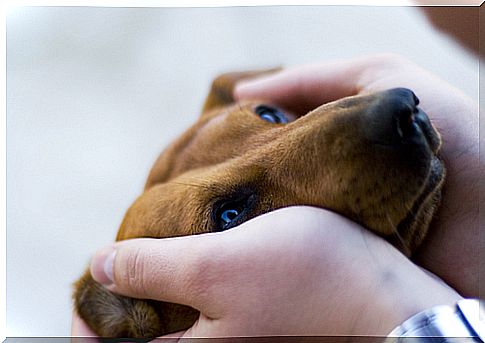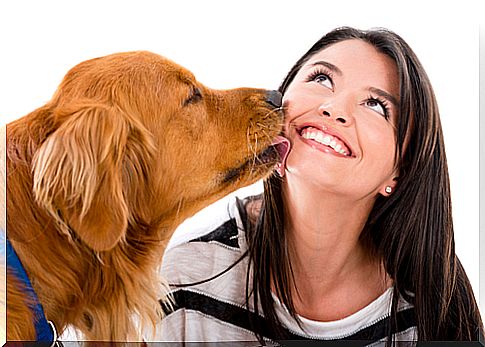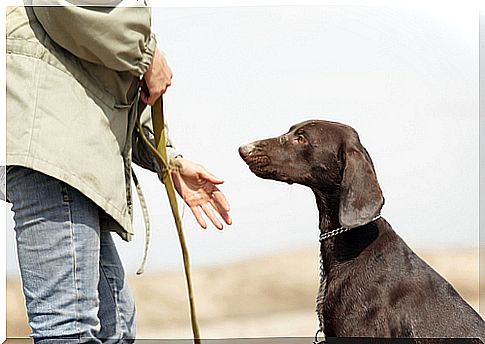Dogs Know How To Distinguish Smile Or Anger On A Human Face

Can dogs read their owners’ minds? Not exactly. It is much more of a special adaptation that dogs have developed throughout their domestication history that has made them much more sensitive to human beings’ ways of communicating.
What does science demonstrate?

Researchers at the Max Planck Institute for Anthropological Evolution assert that there is much evidence to suggest that selection pressure during the canine domestication process modified animals in such a way that they adapted very quickly and totally to their new niche, which is the human environment.
Scientific evidence indicates that dogs are even born with the ability to understand what an object is, as dogs six weeks after birth demonstrate this ability without having received any specific training.
Domestication and many years of living with humans have given dogs an evolutionary ability to pay attention and understand human communication through their gestures.
Although it was possible to think that chimpanzees, because they are anatomically closer to humans, could better understand gestures, this does not happen due to little contact between species, so they are not able to understand simple gestures like a human being pointing An object.
This suggests that pointing out objects is not just a trait that humans have inherited. While chimpanzees are closer to humans genetically speaking, dogs have also adopted this ability.
Other studies

In addition to the question of this simple gesture, a recent survey by the University of Veterinary of Vienna (Austria) determined that dogs are capable of differentiating expressions of sadness and happiness on the human face.
The study was carried out from the training of different breeds, such as Border Collie, German Shepherd and Golden Retriever, which activated a touch screen when they saw a happy or sad face.
To ensure, for example, that the dogs would not react to any display of human teeth as a smile, full-face images were used, from both the bottom and the top of the face.
In this way, the dogs could identify the different emotions of the face, not just the mouth.
Different groups of dogs were asked to identify certain expressions. From there, some would choose between images of people they knew or of totally unknown individuals, expressions of happiness or anger, to receive an award.
When dogs are able to identify emotions, they do so without caring which part of the face they are focusing on, although the study found a curious piece of information: the dogs focused more on the left half of the face.
The group of dogs that were asked to identify the happy traits did so more quickly than the dogs that identified the angry expressions.
Dogs are thought to have identified a happy face more readily than an angry one, perhaps because of the negative association dogs make with angry attitudes.
A happy face means caresses, food and, who knows, some prize. An angry face, on the other hand, conveys the meaning that the owner will not give you the attention you want, and it may even be the case that you receive a scolding.
However, it is not possible to determine whether dogs identified these expressions by their life experiences or by the process of domestication. Without knowing the reason at the moment, it is evident that dogs can differentiate between both expressions.
Due to such a strong bond that originated between humans and dogs over thousands of years, a connection was created where the dogs, where they learned to understand how their (human) best friend feels.
Since the process of domestication began, races have been generated to perform certain tasks, one of which may be, perhaps, understanding our emotions.
For the future, there are plans to study other species that coexist with humans, such as pigs or cats, to see if this condition is exclusive to dogs or if it has to do with animal conditioning in general.
In addition, the study also intends to extend the research to dogs that have not had contact with humans, including other canine species, such as wolves, to find out if this characteristic has been learned or is already included in the dogs’ genetic code.









